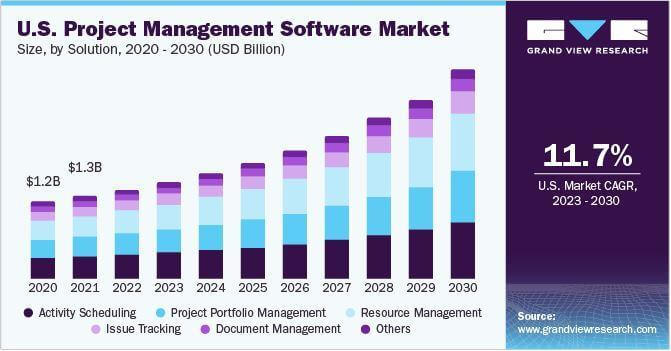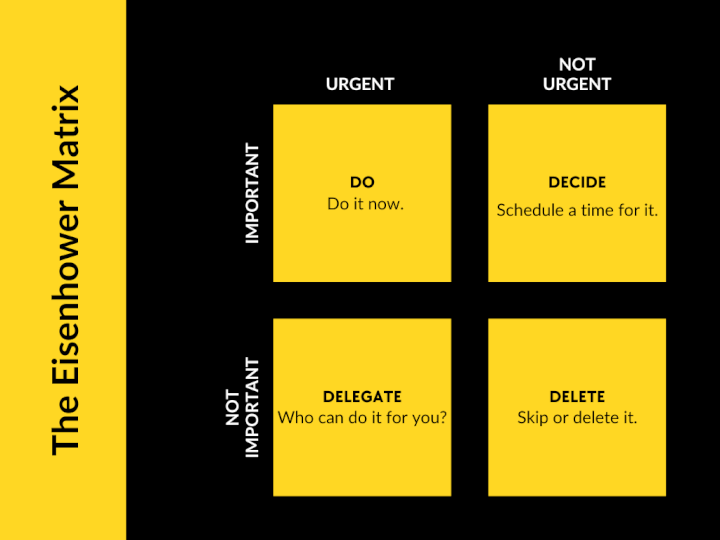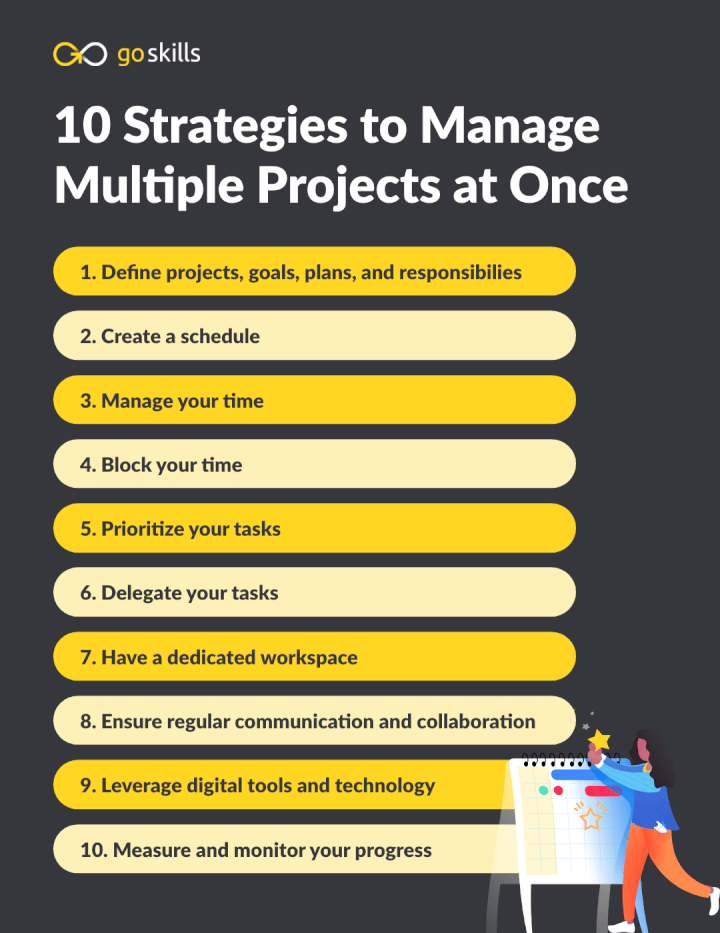Nothing is more stressful than cramming to accomplish each task at work. But what if you are dealing with multiple projects? How do you juggle them all?
Here's the catch: most project managers (nearly 60%) run between two and five projects simultaneously. While over 10% handle six to ten projects, about 15% deal with more than ten.
Fret not; this article shares some project management tips and practical solutions with you. Let's start with why you should care.
Who needs project management skills?
To begin, what is project management? Project management is more than just managing a project, as the name would imply. It's a disciplined approach to planning, implementing, and completing tasks more efficiently and effectively.
As a project manager, you must have the knowledge, skills, techniques, tools, and resources to manage several projects successfully. However, consider these alarming statistics:
About 42% of businesses don't understand the importance of project management. Companies undervaluing this see 50% of their projects most likely to fail. To sum up, 70% of all projects failed to deliver what they promised to their customers.
As such, staying abreast with project management trends is crucial to succeed at what you do. This idea is especially true if you're handling multiple projects simultaneously. For instance, consider investing in digital tools and technology to manage various tasks in one place.
In fact, the global project management software market could grow from $6.59 billion in 2022 to $20.47 billion by 2030. It's projected to expand at a compound annual growth rate (CAGR) of 15.7%.

Of course, leveraging software automation is one of the various project management solutions. However, you can employ other strategies and techniques to succeed. That said, here are 10 actionable strategies for managing multiple projects simultaneously.
1. Define project goals, plans, and responsibilities
As with any project, you start with setting goals, especially when handling multiple projects. Then, you can plan for various aspects of your projects as well as list all your responsibilities and related tasks.
Jay (Yong Jia) Xiao Co-founder, President of SuretyNow, recommends examining a project's viability. "See if they align with your business goals and if you can achieve them. If yes, you can develop a blueprint and start accomplishing your tasks."
Practical Solutions:
- Goal Setting: Define your goals so these multiple projects make sense to you and your team. However, ensure they are SMART—specific, measurable, achievable, relevant, and time-bound.
- Project Planning: Tackle all aspects, from stakeholders involved to budget and financing to project timeline. Employ planning techniques like sprint planning for fast-paced work processes.
- Task Listing: First, take a realistic workload since tackling multiple projects can be overwhelming. Then, list all your tasks so you'll have proper guidance and won't miss out on anything.
2. Create a schedule
After goal-setting and during the planning stage, you must create a schedule. However, scheduling is more than listing all tasks and setting the corresponding deadlines. It requires a strategic approach so you can be more efficient and effective. Below are some practical solutions:
Practical Solutions:
- Project Timeline: Start with creating a timeline for each project. Do they take six months or a year to complete? Ensure you cover from start to finish, from project planning to completion.
- Calendar Management: After creating a project timeline, you've got to be specific. That's where calendar management comes in. Plot all the tasks you should accomplish each month and make changes along the way.
- Critical Path Method: This method helps you organize and schedule all the tasks in your multiple projects. It sets the sequence of activities as well as their durations and relationships.
3. Manage your time
Time management is a buzzword in business deemed truly effective. You can employ several time management techniques to boost your productivity when managing multiple projects. Here are some:
Practical Solutions:
- Ivy Lee Method: Developed by a productivity consultant, this method ranks multiple jobs based on their order of priority. You write six critical tasks for each project for you to accomplish the following day.
- Pomodoro Technique: This method requires 25 minutes of intensely focused work and lets you enjoy a five-minute break afterward. Repeat this cycle, and you'll be more productive at handling each task.
- Eat-that-frog Rule: When dealing with multiple projects, you might look at several tasks and feel overwhelmed. As the name suggests, if you've got to eat a live frog, don't just stare at it; gobble it up right away. This means no procrastination or delaying tactics!
4. Block your time
Multitasking, the practice of tackling all tasks at once, is a big no-no. What better way to manage multiple projects than to try successive multitasking? Learn more about this technique under Practical Solution.
Anthony Martin, Founder and CEO of Choice Mutual, doesn't believe in multitasking. "It's counterproductive. Sure, you might be able to tackle multiple projects at once. However, these tasks might just be half-baked or incomplete. And you might compromise their overall quality."
Practical Solution:
- Time Blocking: This technique involves tackling one task and blocking your time to get it done. Then, you can proceed to the next one. You'll be surprised how you can get several jobs done effectively and efficiently in just a day.
5. Prioritize your tasks
Task prioritization is key to successful project management, especially when you manage multiple tasks. However, it requires critical planning and a strategic approach. How do you prioritize your tasks?
Practical Solution:
- The Eisenhower Matrix: This technique involves prioritizing 'urgent' and 'important' tasks. Look at the four quadrants below and see the steps to take:

6. Delegate your tasks
Managing multiple projects means handling several tasks. But as a project manager, are you responsible for accomplishing all these? The answer is: not necessarily! You can delegate tasks to your team members so you can prioritize the most important ones.
Practical Solutions:
- Task Delegation: Eric Mills, Owner of Lightning Card Collection, recommends employing task delegation for multiple projects. “As a project manager, you are responsible for managing various projects, but not directly tackling each task. The secret? Delegate non-core tasks to your team so you can focus on your core competencies.”
7. Have a dedicated workspace
A dedicated workspace can make a difference in multiple project management. Michael Power, CMO at DTF Transfers, suggests setting up an ideal workspace. “Create a productive environment conducive to handling multiple projects and accomplishing several tasks.” That said, Power recommends the following:
Practical Solutions:
- Decluttering: Remove all possible clutter in your workspace. For one, a pile of paperwork can compromise your focus and concentration.
- Distraction Removal: Get rid of all possible distractions in the workplace. For instance, regulate any forms of entertainment like using mobile phones and gadgets at work.
- Staying Organized: Organization entails strategically arranging and making essential things readily available. Staying organized makes you more productive and focused when handling multiple tasks.
8. Ensure regular communication and collaboration
Effective communication is almost always the key to business success. Jonathan Elster, CEO at EcomHalo, suggests opening lines of communication. “This is especially true if you manage multiple projects and work with various team members.”
Practical Solutions:
- Have regular communication. Project management communication is imperative. Ensure all team members communicate with each other. Capitalize on digital tools and communications technologies if you are working remotely.
- Encourage collaboration. Not only should you promote open communication, but you should also encourage effective collaboration. All team members handling multiple projects should work together towards common business goals.
9. Leverage digital tools and technology
Volodymyr Shchegel, VP of Engineering at Clario, suggests leveraging modern technology for today’s business landscape. “This is especially important if you manage multiple projects, and different team members work in different locations.” Shchegel recommends the following:
Practical Solutions:
- AI and Automation: AI involves the simulation of human intelligence into technology, while automation entails automating tasks and removing manual work. AI can help you handle non-core tasks, while automation can automate and accelerate several processes.
- Communications Technology: This technology lets you interact with others digitally. This is helpful when working with remote team members while managing multiple projects. Slack is a perfect example of an online platform used for business communication.
- Project Management Tools: Digital tools for project management are readily available in the market. Capitalize on a unified platform to manage all your projects in one place, like Asana and Trello.
10. Measure and monitor your progress
Project management requires monitoring and measuring performance regularly. When handling multiple projects, your goal is to check the progress of each project until its full completion.
Alex Milligan, Co-founder & CMO of NuggMD, highlights the importance of performance review. “As a project manager, you must examine your team’s performance and the projects’ progress. Ask yourself: Are your team in the right direction towards achieving your goals?”
Milligan recommends the following:
Practical Solutions:
- Set key metrics. Start by defining your key performance indicators (KPIs). These metrics usually revolve around efficiency, quality, and productivity. They will guide you and your team in accomplishing tasks effectively and efficiently.
- Measure performance. Involve your quality assurance (QA) team in measuring the performance of every team member. But as a project manager, you must stay on top of this!
- Optimize your strategies. If there is room for improvement, sit down with your team and improve your approach to handling multiple projects. There will always be a way to optimize your tactics.
Want to learn more?
Take your project management skills to the next level with our comprehensive (and free) ebook!
Final Words
Managing a project is no easy feat—what more if you deal with multiple projects? So, how do you handle them all? Here's a quick recap of the ten project management tips discussed above.

Looking to take your project management skills to the next level? With project management certification and you'll be adept at juggling multiple projects all at once. Why not explore our project management courses to get started?
Prepare to get certified in project management
Start learning today with GoSkills courses
Start free trial



